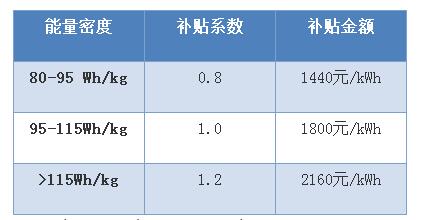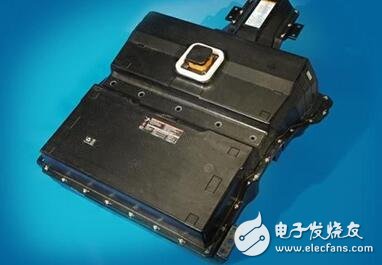Recently, the news of various new energy vehicles has skyrocketed. It is said that Gree must be a new energy vehicle, and the world's best Dong Ayi is not allowed to be elected by the chairman of Gree Group in the new energy industry circle. Of course, the most striking thing is the latest draft of the subsidy for new energy vehicles. In short, the subsidy for passenger cars is temporarily unchanged. The pure electric and plug-in hybrid buses are subsidized according to the energy density, and the cruising range is a hard indicator. The fast-charged pure electric bus is subsidized according to the charging rate. The worst thing is that the technical indicators of logistics vehicles are still being drafted, and subsidies are suspended. Taking this pure electric bus subsidy policy, the subsidy will not be based on Ekg and the captain, and the energy density of the battery system of the vehicle will be taken as an indicator. If the network transmission policy is true, from the author's personal point of view, the promotion of this policy to the development of the new energy automobile industry will be weakened by some enterprises with drill holes. Why do you say this and look at the analysis. The promotion effect is obvious. First, it indicates that the subsidy policy will soon land, so that those enterprises struggling for the new energy automobile industry will gain momentum. Second, the conversion of subsidy standards, shifting to more practical energy density, means that the technology of each enterprise should be updated and improved, rather than relying on stacked batteries to increase the degree. Where is the vulnerability? In fact, it is the second point of promotion. Because the subsidy standard for pure electric buses does not depend on the type of energy storage system, regardless of the length of the vehicle, and does not examine the Ekg, the driving range of more than 200km (constant speed method) is required as a subsidy. The subsidy amount is 1,800 yuan / kWh, and the total amount does not exceed 350,000 yuan / car. Among them, the subsidy coefficient of the energy density of the battery system is divided into three. Then the problem has come. Some enterprises that have paid attention to subsidies must still pay attention to subsidies and not implement technological development. For example, the current technical level of a company can only achieve 95Wh/kg, but to get the subsidy of the 96Wh/kg gear, it is necessary to increase the energy density through various means. If this method is not to improve the technology, but to cut corners, such as changing the thickness of the box to reduce the weight to 95.1Wh / kg, the safety hazard will inevitably be amplified. The opposite of pursuing energy density is the decline in safety. There is another important point. I personally speculate that this online communication policy is not only for everyone to pay attention to the improvement of energy density, but also for everyone to pay attention to how to achieve energy density improvement safely. It is promoted to passenger cars by the bus, which is a slightly lower-tech vehicle. How to ensure safety while pursuing energy density, we must not forget a development trend of the future car - lightweight. The car can be lightweight, and the battery system can also be lightweight. As for the author's shallow knowledge of the battery system, talk about how to achieve lighter weight more safely. The general battery system is mainly composed of a battery core, a box body and a structural member. In the case of a certain energy density of the battery system, the number of cells is constant. If the safety of the battery is kept constant, it is the most direct way to increase the energy density of the battery and reduce the quality of the battery. However, the energy density of the battery core will not be too high in the short term, so it is only possible to find a solution from the box and the structural member. First, look at the box. Most of the materials currently used are high-strength steels, light metals, and the like. In fact, some manufacturers have begun to use composite materials such as SMC and AMM. These two materials have obvious advantages over aluminum castings and sheet metal parts. SMC and AMM materials are lighter than metals when they meet the same strength requirements. Relevant data indicates that AMM is selected, which reduces the weight by 22% compared with cast aluminum and 64% lower than steel. However, due to the optimization of AMM on the basis of SMC, the thermal conductivity is stronger. Secondly, structural members such as brackets, frames, end plates, etc. can also be lightweighted by material improvements. At present, more materials such as PC/ABS are used, and the application habits before use are a big reason. I have compared a certain PPO material with some PC/ABS and PA materials for simple calculation. The density of PPO, PC/ABS, and PA are 1.08, 1.2, and 1.58 g/cm3, respectively, so that the weight can be reduced by 10% compared with PC/ABS and 32% by weight of PA under the premise of satisfying performance. In addition, in the small parts such as the thermal pad, the replacement of the thermal adhesive can also achieve some weight reduction, while the thermal conductivity is enhanced, the thermal runaway probability of the battery is reduced, and the safety of the entire battery system is strengthened. How to delay the thermal runaway of the battery, such as the addition of foam or aerogel in the middle of the battery is another topic. Regardless of the change in subsidy policy, the development of new energy vehicles is still based on technology. Whether this online transmission policy is true or not, the trend of lightweighting will not change. In pursuit of energy density while ensuring safety, companies in the entire industry chain need to take every step seriously.
Solar
water heating system is a cost-effective system for residential hot water application. This system is designed according to thermosiphon principle and operating with
proportion difference between cold and hot water. The water heated by vacuum
tubes is held in the stainless steel storage tank where the insulation
preserves the heat.
The
thermosiphon Solar Water Heater uses the sun to heat the working fluid (mostly
water) in the Vacuum Tubes. The Solar Collector absorbs solar radiation, and
converts the sunlight to heat and transfer it to the water. The heated water
naturally rises through the solar collector into the water tank where the
cooler water at the bottom of the tank is forced out and descends to the bottom
of the collector (thermosiphon circulation). The circulation will be
interrupted when there is no solar radiation.
Solar Panel Hot Water System,Thermal Hot Water System,Thermal Water Heater System,Solar Power Heating System Linuo Ritter International Co.,Ltd , https://www.lnrtsolarenergy.com
